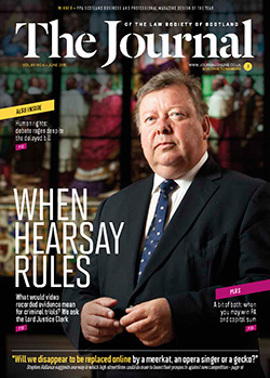"My time is valuable!" Oh really?

With Mr Editor’s permission, in the coming months I will look in depth at pricing, performance and their interaction.
It’s about time – except it isn’t. You’ll know the story of the country person who is asked for directions. After lengthy contemplation, he replies, “Well, I wouldn’t start from here.” Lawyers who make pricing decisions principally by asking, “How long is this going to take?” invite the same response. It’s an approach which regularly costs them goodwill, relationships and money.
Lord Justice Donaldson observed: “Pricing is as much an art as a science... an exercise in balanced judgment, not an arithmetical calculation.” Some like to describe it as a “dark art”, which reveals more of how they view themselves and their clients than perhaps they intended.
A well-made pricing decision leaves both sides feeling they have been treated fairly, the only context in which successful long-term relationships can flourish. Like the tourist, reaching our destination by the best route means starting from the right place, by considering thoughtfully, “What does ‘value’ look like to our client?”
A practical example: an English firm I worked with, practising in media law and reputation management, charges by the hour in all circumstances, up to £750 for its most senior people. “Imagine,” I asked its head, “Paul McCartney calls you late at night in a panic that the Sun has got hold of a devastating story it plans to print the following day. Imagine further that you are able to reach the editor on his private number at 1am, and using your skills honed over decades, persuade him over an hour-long conversation to spike the piece. Does your invoice to Macca read: ‘To saving your career: £750 + VAT?’” Only if you are insane.
What do clients value most? We do not have to guess: numerous surveys agree that clients place the highest value on lawyers who:
- are first and foremost likeable, and easy to deal with. Yes, affability ranks higher than ability;
- understand their needs and expectations, and are willing to invest significant (non-chargeable) time engaging with them to make sure they do;
- have not just the range of skills and experience, but the depth of resources to deliver consistent results;
- meet deadlines and keep commitments;
- are clear communicators;
- have effective processes;
- are skilled at costing and budgeting;
- are good at project management;
- are innovative and flexible.
Note that clients do not value time per se. They expect their lawyers to use their time efficiently, hence their rating of consistency, good process and project management, but in this post-recession age, for most, the idea that time should be the main determinant of price seems ridiculous.
Yet hourly billing is by no means extinct. Apart from being very profitable if you can get away with it, adding up six-minute units is a lot easier than making the nuanced calculations of value billing.
Indeed, lawyers often have only a hazy idea of what “value billing” entails. My favourite definition comes from Professor David Maister’s classic, Managing the Professional Services Firm: “There is no secret trick to value billing. Just figure out ways to be more valuable. Then you’ll get paid more.”
Just as clients’ priorities on service are well known, so they are on price:
- Predictability: Nothing disturbs clients more than feeling they are plunging into a vortex of uncertainty and anxiety about payment, from which there is no escape – the key characteristic of the hourly rate.
- Clarity and transparency: How has the fee been calculated? What is the methodology? “Dark artists” resist transparency, but as in all human relationships, the more open and honest it is, the more successful and enduring it will be. Of course, negotiations may follow, but they will be conducted in the context of mutual trust.
- Direct link between cost and benefit: It is vital to spell this out, but often forgotten. We are great at explaining what we are going to do, but much less so at articulating what our clients are getting out of it, and why we are worth the money.
- Choice and control: Rarely does one size fit anyone. Pricing proposals offering a menu, depending, for example, on sharing of risk and reward, or different service levels, shaped to fit the client’s needs and outlook, have far more chance of achieving the right result for both sides.
I said at the outset that I want to look at how pricing and performance interact. Many pricing discussions seem to take place in a vacuum, but it matters little how innovative your proposals are, if your delivery compromises your ability to satisfy the client and/or maximise profit.
I look forward to your company on the journey.
In this issue
- Weighing the risks
- Private parking fines – are they enforceable?
- Scotland – home of (dangerous) golf
- Shareholder details: the right to refuse
- Perils of the owner-occupied croft (fuller version)
- Reading for pleasure
- Opinion: Thomas Ross
- Book reviews
- Profile
- President's column
- Land Register completion: one year in
- People on the move
- Rights: whose final say?
- The word on the street
- Screen test
- Making the best of mediation
- Keep up the payments
- The right priorities
- When reputation is not enough…
- Sports justice – being seen to be done?
- Source of disputes
- CML Handbook: the new deal
- Perils of the owner-occupied croft
- In-house and in-tune in the Commonwealth
- Stair Society seeks new blood
- New Build Standard Clauses revised
- Law reform roundup
- Leven's last hole rarely in benevolent mood
- Year of the new look
- AML just became simpler
- "My time is valuable!" Oh really?
- Learning opportunity
- Ask Ash
- Technology: slave or master?






